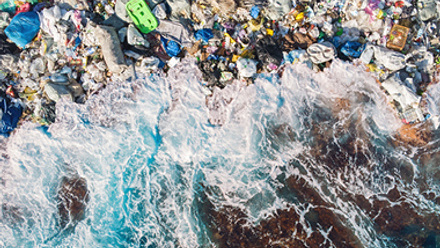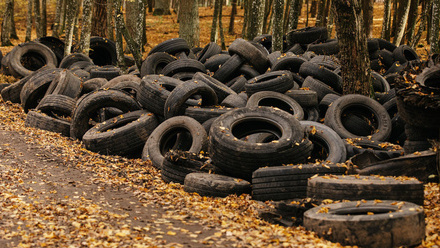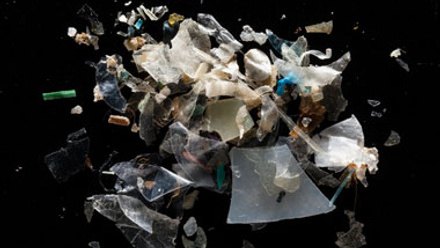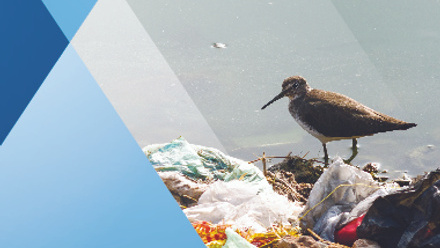Polymer Additives and their Transformation Products as Chemicals of Emerging Concern: Environmental Emissions, Fate Processes and Impacts
Markus Brinkmann, University of Saskatchewan; Cassandra Johannessen, Concordia University; Steve Wiseman, University of Lethbridge
The session, "Polymer Additives and their Tranformation Products as Chemicals of Emerging Concern: Environmental Emissions, Fate Processes and Impacts," was held at the SETAC Europe 33rd Annual Meeting in Dublin, Ireland. Plastic products are ubiquitous in the global environment. These polymers often contain a variety of chemical additives to improve their performance and structural integrity. While serving important commercial functions, these additives can leach into the environment. Research has demonstrated profound contamination with plastic additives in water, soil and air. However, many plastic additives are under-characterized in terms of environmental emissions, fate and impacts. Recent advances in no-targeted analysis have led to the identification of previously overlooked additives in the environment. In addition, empirical evidence continues to demonstrate that many additives can be environmentally tranformed into new compounds that may be more hazardous than parent compounds. For example, p-phenylenediamines (PPDs), which are rubber tire antiozonants, readily convert into quinone derivatives that are released into the environment. One transformation product, 6PPD-qunone, causes mass coho salmonmortality and is acutely lethal to other salmonids.
This topic is gaining significant global research interest from scientists, regulators and the public alike. We invited contributions featuring emerging information on this topic that would help participants remain at the forefront of related scientific research. In addition to contributions advancing the state of the science through laboratory or field studies, we encouraged submissions from government and industry to discuss how these stakeholders respond to the rapidly evolving science and discuss information required to make regulatory decisions.
Platform presentations
During three platform sub-sessions of five presentations each, presenters focused on three overarching topics. In the first sub-session, presentations focused mostly on the toxicological impacts of the tire-wear transformation product 6PPD-quinone and other additives from consumer plastics. Talks in the second sub-session higlighted anlytical studies that identified novel transformation prodcuts of additives, while speakers in the third sub-session presented on environmental monitoring of polymer additives.
The first sub-session featured a presentation by Danielle Philibert from the Huntsman Marine Science Centre, Canada, on "Assessing the Effects of Acute and Pulsed Exposure of 6PPDq on Brook Trout (Salvelinus fontinalis) Fingerlings and Fry." Philibert found that brief exposures at higher concentrations resulted in higher mortality rates than longer exposures at lower concentrations, which suggests there may be a threshold exposure concentration after which recovery is no longer possible. Qiuguo Fu from the Helmholtz Centre for Environmental Research, Germany, presented on "Uptake and Transformation Kinetics of the Tire Rubber-derived Contaminant 6PPD Quinone in the Zebrafish Embryo (Danio rerio)" and described a comprehensive set of biotransformation products. Catherine Roberts from the University of Saskatchewan, Canada, highlighted that early-life stage rainbow trout (Oncorhynchus mykiss) alevins are more sensitive than sub-adults, with five-week, post-hatch fry exhibiting the greatest sensitivity to acute exposure with 6PPD-quinone during her presentation titles "Toxicity of 6PPD-Quinone to Early-life Stage Rainbow Trout." Summer Selinger, also from the University of Saskatchewan, described a range of novel and previously undescribed cardiovascular responses of rainbo trout and Arctic char (Salvelinus alpinus) to exposure with 6PPD-quinone in her presentation, "Acute Cardiometabolic Responses of Juvenile Salmonids Exposed to 6PPD-Quinone." Selinger won the 2023 SETAC Europe/ECETOC Young Scientist Award for the best platform presentation for this talk–Congratulations! Last in this sub-sesssion, Mara Römerscheid's colleague from the Helmholtz Center for Environmental Research, described strategies for "Prioritizatino of Consumer Plastics for Further Testing Based on Artificial Weathering Combined with Bioanalytical and Chemical Screening." These researchers found that leachates of plastic consumer products had the potential to cause phytotoxicity, thereby indicating a potential risk to freshwater algae.
In the second sub-session, John Liggio, from Environment and Climate Change Canada, highlighted research to achieve an “Improved Kinetic and Mechanistic Understanding of Atmospheric Chemical Transformations of Polymer Additives Through Laboratory Studies.” He observed atmospheric oxidation products of PPDs that warrant further scrutiny with respect to their inherent toxicity and their prevalence in atmospheric and/or aquatic samples from the ambient environment. Anya Sherman from the University of Vienna, Austria, presented her study monitoring “Plant Uptake and Metabolism of Tire-derived Compounds.” Altogether, her findings indicate that if plants are exposed to tire wear particles during growth, the compounds contained in the tire wear particles may be taken up by plants and translocated to their edible parts through the time of consumption. Novel metabolites of the tire additives were also found to form within the plants. William Fahy from the University of Toronto, Canada, described “Products and Reaction Pathways of the Multiphase OH Radical Oxidation of 2-Ethylhexyl Phthalate in Pure Films and Indoor Dust.” Fahy found a complex mixture of transformation products formed from multiphase OH oxidation of indoor contaminants, warranting future work examining the effects of exposure to indoor heterogeneous transformation products on human health. Mauritius Marches dos Santos from Nanyang Environment & Water Research Institute (NEWRI), Singapore, investigated the “Formation Potential and In-vitro Toxicity of Chlorinated Disinfection By-products of the Polymer Additive 1,3-diphenylguanidine (DPG)” and found that DPG reaction with free chlorine doses commonly applied during drinking water treatment or in water distribution networks (0.2-0.5 mg/L) can lead to the formation of toxic and genotoxic chlorinated products. Last in this sub-session, Kathrin Müller from the Hochschule Fresenius, Germany, asked the question “Are Wastewater Treatment Plants an Effective Barrier Against Tire Leachables? Biotransformation and Screening Experiment.” While a transformation of up to 100% for some of tire leachables was seen in laboratory experiments, Müller did not observe this in the sampled wastewater treatment plants, which she attributed to the lag phase of several tire leachables of up to 11 days.
In the last sub-session, session co-chair Cassandra Johanessen from Concordia University, Canada, presented on “Tire-derived Compounds in the Atmospheric Environment,” and showed some of the first data for airborne concentrations of chemicals associated with tire-wear that can be used for modeling and exposure assessments. Due to the presence of many tire-derived contaminants in urban air across the globe, and the current lack of toxicity data for these chemicals, this study highlighted the need for human health considerations pertaining to tire-derived chemicals. Regine Nagorka from the German Environment Agency (UBA) described “Spatial and Temporal Trends for Regulated Plasticizers and Their Emerging Substitutes in Biota and Non-Biota Samples from German Rivers.” She found that Di(2-ethylhexyl) phthalate (DEHP) replacement chemicals were present across all ten river sampling sites in Germany, and saw a rapid appearance of Di(2-propylheptyl) phthalate (DPHP) as the main replacement plasticizer. Julio Fernández-Arribas from the Spanish Institute for Environmental Diagnosis and Water Studies (IDAEA-CSIC) presented on “New Alternative Plasticizers in Foodstuffs: Occurrence, Migration from Packaging and Exposure Through Diet.” Fernández-Arribas found that new alternative plasticizers were found in the human diet and that their residues increase when cooking food in plastic packaging. Helene Wiesigner from ETH Zürich, Switzerland, presented the results of an extensive review and posited that “Chemicals Present in Plastics Pose a Risk to Health, Environment and the Transition to a Circular-Economy.” Last in this sub-session, Moritz Kielmann from the Hamburg University of Applied Sciences (HAW), Germany, presented results on the “Toxicological and Chemical Evaluation of Leaching Substances from Conventional and Bioplastics” using a holistic approach.
A full list of the session presentations can be viewed online through 4 August 2023 (for registered attendees of SETAC Dublin).
Author's contact information: [email protected]





